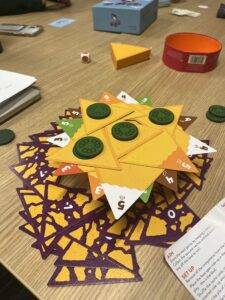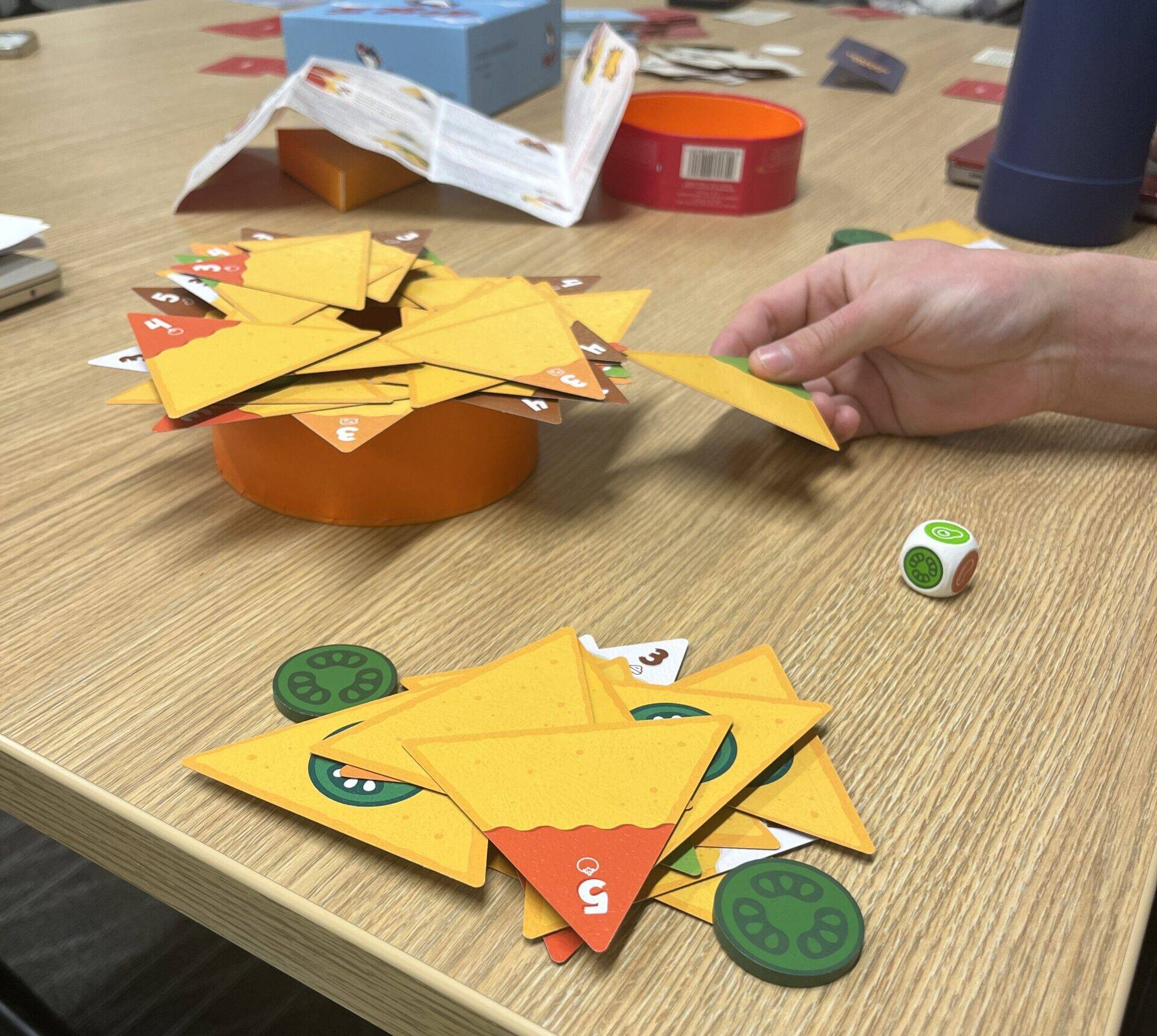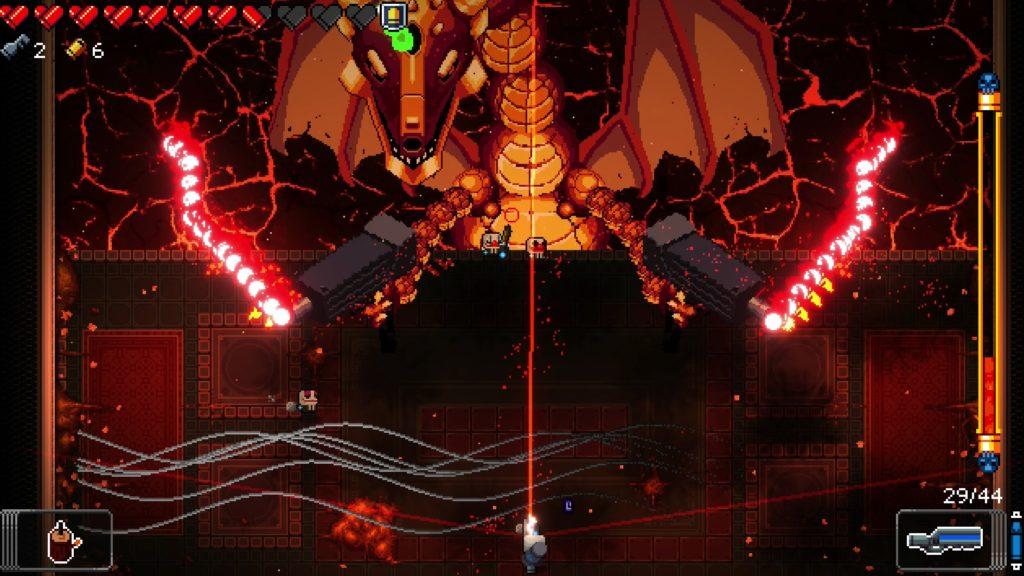I played Nacho Stack, which is a tabletop game created by professor puzzle games a UK based game designer and manufacturer of games and puzzles. The target audience is for anyone ages 8 and above who appreciates puzzle games. I played at 247G game night with Juoaqin, another 247G student, and while we were playing the game, it was revealed that Juoaqin was incredibly skilled with stacking games and had gotten a Jenga tower to two times its height. I am not very skilled with stacking games and was a bit nervous that I would ruin the stacking fun. Nacho stack involves two parts. In part 1, you are building the nacho stack by pulling a card and stacking it on the rim of the bowl, making sure that two sauce colors are not touching each other. Then, in part 2, you are rolling a dice with each size representing a sauce/jalapenos to tell you which card you must pull from the stack without making everything fall down. Each sauce has cards numbered 1-5 indicating the number of points you get for successfully pulling one out. On the back, they are numbered with negative values for when you make that card fall off the pile.

As we were playing, we both noted that this was less competitive than we thought it would’ve been. We both described it as almost a mindfulness practice, where we were super focused on the present moment but not necessarily stressed or nervous about achieving the game objectives. It didn’t get very challenging at all until the last handful of chips were left; we only had one spill of two unwanted chips falling. This was probably due to some lack of clarity in the critical mechanics of the game, there was no specification on whether we could only touch the chip we were pulling out or if we could touch the other and shift things as we were pulling out the chip we wanted. Being able to shift other cards as we pulled the chip out made things significantly easier and almost a different game than when we tried to do it by only touching one chip.
The stacking game my team is prototyping aims to increase the challenge much more than Nacho Stack. By incorporating having to find everyday household objects you don’t always deem stackable and having a time limit to find them, we are hoping to create a much more competitive environment where players are not only competing with each other but also competing against the stack. I learned from this play test with Nacho Stack that clarity of the rules of stacking is of the utmost importance. Going forward, I will make sure our stacking rules are play-proof to ensure that the difficulty is at the right threshold; this is something that we will be figuring out during play testing. One aspect that I liked from the nacho stack game was assigning points to the items you stack, I think that could be something we could try to incorporate into our stacking game. I find this to be a necessary aspect because I noticed I was trying my hardest to keep the stack alive so that we could keep playing rather than making strategic moves to outwit and outplay my opponent. When you add points in, it can highlight that competitive dynamic. Overall, I hope that compared to Nacho Stack, this game is more chaotic and challenging instead of meditative and chill, providing laughs and fun for the players.




